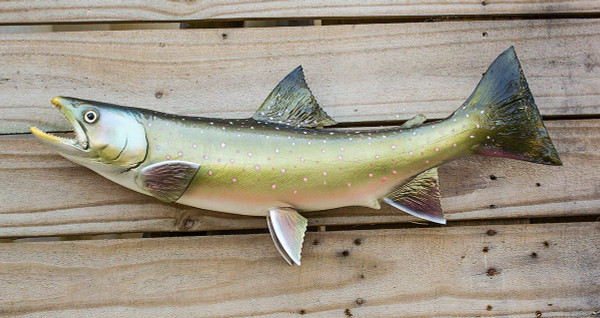

They have very small lightly colored spots, less than 1 mm in diameter, all over their body and especially around their dorsal fin. ( Baxter, et al., 1997 Dolloff, 1986 "Dolly Varden (Salvelinus malma)", 2008)įreshwater adult Dolly Varden generally are a blueish-olive green color on their dorsal side.

In rivers they are typically found around half a meter in depth, and tend to stay around the bottom half of the water column in deep rivers. During the spring, they migrate to the coasts of oceans or brackish estuaries to feed and spawn. Dolly Varden are an anadromous species which means they migrate between fresh and salt water. This habitat increases their efficiency because they use less energy swimming in current as well. This debris offers them protection from current and cover to ambush prey. In streams, populations are much denser in areas with substantial coarse woody debris. They can also live in lakes, larger rivers, brackish estuaries, marine shorelines and the open ocean occasionally. ( "Dolly Varden (Salvelinus malma)", 2008 Oleinik, et al., 2001 "Southcentral Alaska wild Dolly Varden", 2006)ĭolly Varden live primarily in freshwater environments, particularly streams that are often less than one meter wide in the summer. The southern form ranges from southeast Alaska throughout the Gulf of Alaska to the south side of the Alaska Peninsula and the Aleutian and Kodiak islands. Presumably isolated from one another since the last glaciation, the northern form Dolly Varden range from the north side of the Alaska peninsula northward to the Mackenzie River in Canada and in the Susitna drainage in south-central Alaska. Northern form Dolly Varden can become much larger than the southern form, although both do make migratory sea-runs if not landlocked. They also differ in the number of gill rakers. Southerns have 62–65 vertebrae and 82 chromosomes northerns have 66-70 vertebrae and 78 chromosomes. The two differ in number of vertebrae and number of chromosomes. In Alaska, a northern form Salvelinus malma malma and southern form Salvelinus malma krascheninnikova exist. During this migration they typically stay close inshore but can cover several kilometers to feed and find steams to travel upward into and stay for the winter if it is a suitable stream, lake or river. During the summer Dolly Varden make a feeding migration to the Pacific coast from fresh water steams and rivers. This species can also thrive in inland steams or lakes around these areas. Outside of North America the subspecies Salvelinus malma curilus and Salvelinus malma miyabei can be found along the Pacific coast of Russia and south to Japan and Korea. Specifically in North America these char range from Washington state to the Arctic coast of Canada. Dolly Varden range from the coastal areas of southeast Alaska across the Gulf of Alaska and the Bering Sea into the Beaufort Sea to the Mackenzie River in Canada.


 0 kommentar(er)
0 kommentar(er)
